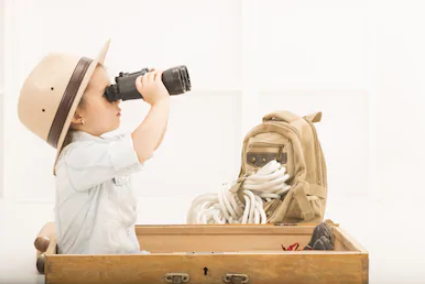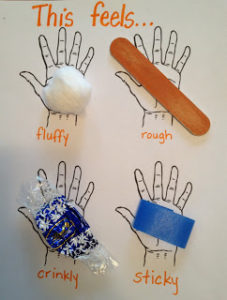
We bet you click on this article because of how much you love scavenger hunts! Decoding clues and looking for various objects – so much fun, isn’t it! These hunts can be modified to be educational, and even though they’re typically done outdoors, they can easily be organized for the indoors, too.
Thank you for reading this post, don't forget to subscribe!
A scavenger hunt activates your child’s cognitive and motor skills, as it requires focus, concentration, attention and reasoning, as well as plenty of moving and poking around to find and pick up objects.
How about we give the regular scavenger hunt a twist? Let’s talk about textures!

This would be great if your child is starting to recognize the different textures that various objects around him have. It would require only readily available household items and an afternoon that’s ready for fun!
Doesn’t that sound like an interesting challenge? Come on, let’s have a look at how to do this!
Here’s the theme of the scavenger hunt:
It’s all about textures. The scavenger hunt must incorporate basic textures – rough, smooth, hard, and soft – and a few others, such as crumpled/crinkly and prickly/pokey.
Here’s what you will need:
- Rough or grainy-textured objects – sponges, a bowl of salt or sugar, a rough woollen sweater
- Smooth-textured objects – silky ribbon, magazine pages, a polished tabletop
- Hard-textured objects – building blocks, ice cubes, arm rests or backs of chairs
- Soft-textured objects – cotton pieces, a teddy bear, a baby blanket
- Crinkly-textured objects – crepe paper, crumpled paper, plastic from toffees
- Prickly-textured objects – Velcro, aloe vera or cactus plants
Here’s how to go about it:
- Pick at least one object from the list of textures above. For younger children (2 to 4 years old), use only one object per texture. For older children (4 to 6 years old), you may use two or more objects per texture.
- Choose a room in your house around which your child can move easily without obstacles or the fear of tripping or getting hurt. For younger children, use one room. For older children, you may use two rooms to increase the challenge.
- Hide the chosen objects around the room. Don’t hide them too well, though – your child should be able to find them without much difficulty (or climbing on top of things!).
- When you’re ready, give your child clues to find these objects. You can say, “Find something that is soft/smooth/pokey/etc.” If he’s having a bit of trouble, give him a hint as to where he may find that object, or remind him what the texture feels like.
- For older children, you may make the clues a bit indirect, by relating the texture to an object your child knows. For example, you can say, “Your clue is to find something that feels like the teddy bear you sleep with at night.” This will stimulate your child’s cognitive abilities as he recalls what his teddy feels like (soft and cuddly), and relates it to the objects he comes across in his search.
- Also, if you’ve chosen to hide objects in two rooms, you can make the hunt more interesting by pasting the clue to the object in the next room on the object your child is looking for in the current room.
- Whenever your child finds an object, encourage him to take some time and really feel its texture, and help him relate the feeling to other objects as well.
- Lastly, once your child has found all the different-textured objects and the hunt is complete, give yourselves a treat! That must have been hard work!
Now, wasn’t that just a truckload of enjoyment? Being indoors doesn’t have to get boring or monotonous. There are plenty of activities, projects and games to entertain your little one AND yourself!











